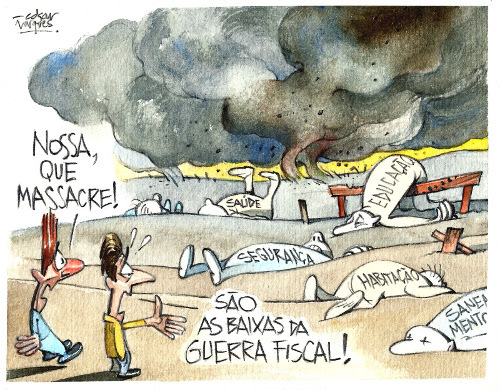The problems in the Brazilian countryside have been dragging on for hundreds of years. The unequal distribution of land triggers a series of conflicts in rural areas. This issue began during the 1530s, with the creation of hereditary captaincies and the sesmarias system, in which the Portuguese crown distributed land to those who could produce, as long as one-sixth of the production was paid for the Crown.
As a result, few people acquired large tracts of land, establishing several large estates in the country. Some families concentrated large rural properties, and peasants began to work as employees for the land holders. However, violence in the countryside intensified with the independence of Brazil, in 1822, when the demarcation of rural properties took place through the law of the strongest, causing several murders.
Another widely used device that triggers a series of conflicts is land grabbing. This method is intended for falsifying land tenure documents, in which land grabbers place fake documents in closed boxes with crickets until the papers look like aged. Subsequently, the property is sold using this false document, causing the eviction of the owner, who is usually a small farmer.
In addition to these factors that benefit large land holders, another problem is the current organization of agricultural production. Mechanization and the massive use of technology in the countryside have forced small producers to sell their properties and work as employees or migrate to cities, as many of them are unable to mechanize their production, which results in low income, which puts them at a disadvantage in the Marketplace.
Do not stop now... There's more after the advertising ;)
Faced with this scenario of land concentration, several social movements were created with the aim of reversing this situation. The Landless Rural Workers Movement (MST), for example, calls for agrarian reform to be carried out, occupying large estates as a way of putting pressure on the government. However, these occupations are not always resolved peacefully, triggering conflicts in the countryside.
Other problems in the field are the use of child labor and worker exploitation. Despite the abolition of slavery in 1888, Brazil still registers denunciations of slave labor. Owners of some farms hire employees, who are required to pay for travel, food, accommodation, etc. Thus, the worker, even before starting the activities, is already in debt, being forced to work to pay off all the “investment” of the boss.
Therefore, it is necessary that public policies are developed to solve these problems, in order to reduce the inequality in the countryside, inspecting working conditions, in addition to offering subsidies to small producers rural areas.
By Wagner de Cerqueira and Francisco
Graduated in Geography
Brazil School Team
Brazilian Agriculture - Human Geography of Brazil
geography of Brazil - Brazil School
Would you like to reference this text in a school or academic work? Look:
FRANCISCO, Wagner de Cerqueira e. "Social problems in the Brazilian countryside"; Brazil School. Available in: https://brasilescola.uol.com.br/brasil/os-problemas-sociais-no-campo-brasileiro.htm. Accessed on June 28, 2021.


